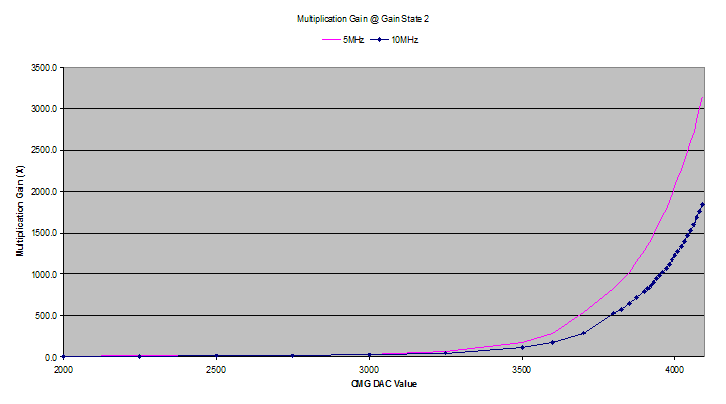Calculating Electron Multiplication Gain
This is a technical note on how to measure actual Electron Multiplication Gain in an EMCCD camera
Multiplication gain is defined as the ratio of (Charge with Gain) / (Charge without gain).
Final Test Procedure
For Final test, a thirty five point curve of Multiplication Gain vs. Multiplication gain DAC is generated using the following procedure. For camera’s that are cooled a bias may be substituted for the dark.
- Set the Multiplication DAC to 0.
- Determine the exposure time so expected the image mean is shot noise limited. Typically 25 to 50% of single pixel full well capacity.
- Acquire an image and Dark without any multiplication gain. Record the exposure time, dark mean, (image – dark) mean.
- Set the Multiplication DAC to predetermined value. See curve for example.
- Acquire an image and Dark with multiplication gain. Adjust exposure time as needed to get the image mean close to the same mean value obtained in step 2 or no less than 1ms.
- Calculate the multiplication gain using the following formula:
$$ G = {S(light,gain) – S(dark,gain) \over S(light,no\_gain)} \times {Exp(no\_gain) \over Exp(gain) }$$
Where
| G | is the multiplication gain |
| S(light,gain) | is the mean number of counts with gain on and exposed to light |
| S(dark,gain) | is the mean number of counts with gain on in the dark |
| S(light,no_gain) | is the mean number of counts with gain off and exposed to light |
| S(dark,no_gain) | is the mean number of counts with gain off in the dark |
| Exp(gain) | is the exposure time in ms for the gain measurement |
| Exp(no_gain) | is the exposure time in ms for the initial, non gain measurement |

